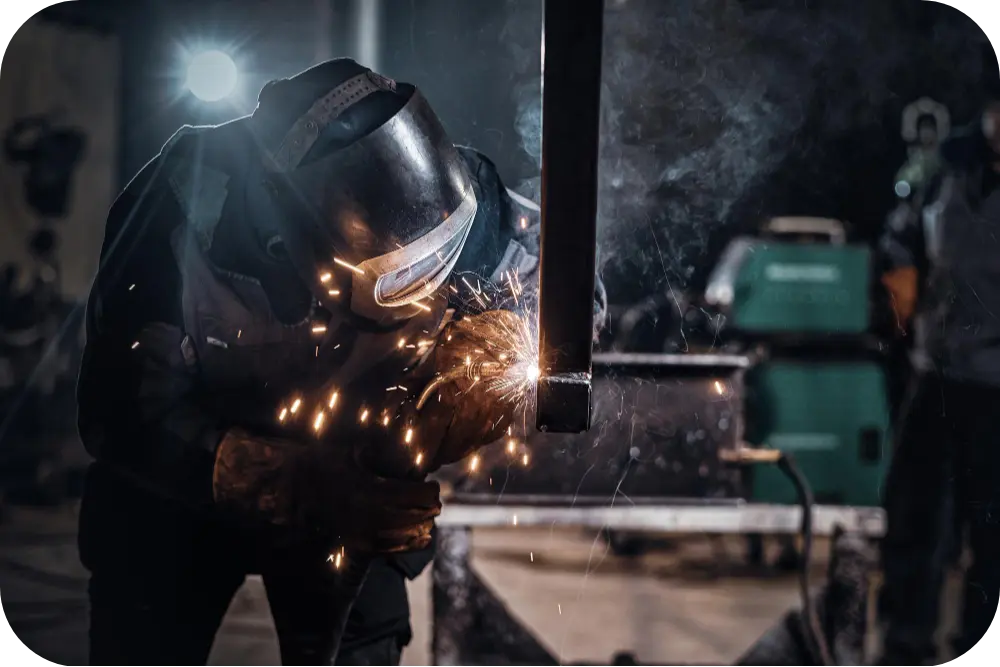Arc welding is a cornerstone of modern engineering and fabrication. Whether building bridges, ships, or pressure vessels, arc processes offer the control, strength, and repeatability required for safety-critical structures.
This article explores the key arc welding methods, their advantages, and when to use each process.
What is Arc Welding?
Arc welding uses electric current to create an arc between an electrode and the base material. The intense heat melts the metals at the weld point, forming a strong joint upon cooling.
Arc welding typically involves either a consumable electrode (which becomes part of the weld) or a non-consumable electrode (with a filler rod added separately).
1. Shielded Metal Arc Welding (SMAW / Stick)
This process uses a flux-coated electrode and is known for its simplicity and portability.
Why Use SMAW:
- No external shielding gas needed
- Works in harsh outdoor conditions
- Inexpensive equipment
Common Uses:
- Shipbuilding hull repairs
- Pipeline welding
- Construction site welding
2. Gas Metal Arc Welding (GMAW / MIG-MAG)
GMAW includes both MIG and MAG processes, using a continuous wire feed and shielding gas to protect the arc.
Why Use GMAW:
- High-speed production welding
- Cleaner and more consistent welds
- Easily automated
Common Uses:
- Automotive frames and bodywork
- Equipment manufacturing
- Steel structures and ducts
3. Gas Tungsten Arc Welding (GTAW / TIG)
TIG welding uses a non-consumable tungsten electrode and produces precise, high-quality welds.
Why Use GTAW:
- Superior control and finish
- Perfect for thin metals and high-spec projects
Common Uses:
- Aerospace parts
- Pipe systems
- Food-grade and stainless steel structures
4. Flux-Cored Arc Welding (FCAW)
FCAW uses a tubular wire filled with flux, making it suitable for heavy-duty welding both indoors and outdoors.
Why Use FCAW:
- High deposition rates
- Excellent for thick metal sections
- Works well in windy conditions
Common Uses:
- Bridge construction
- Structural steel welding
- Industrial fabrication
Engineering Considerations
Welding engineers choose arc processes based on:
- Material type and thickness
- Joint design and tolerance
- Project environment (field vs. factory)
- Code compliance (ISO, AWS, EN standards)
Need Certified Arc Welders?
Navis International provides EN ISO 9606-certified arc welders trained in SMAW, MIG/MAG, TIG, and FCAW. Whether you're fabricating offshore structures or critical infrastructure, our professionals deliver quality, safety, and reliability.
Contact us today to get the right arc welding professionals for your project.
